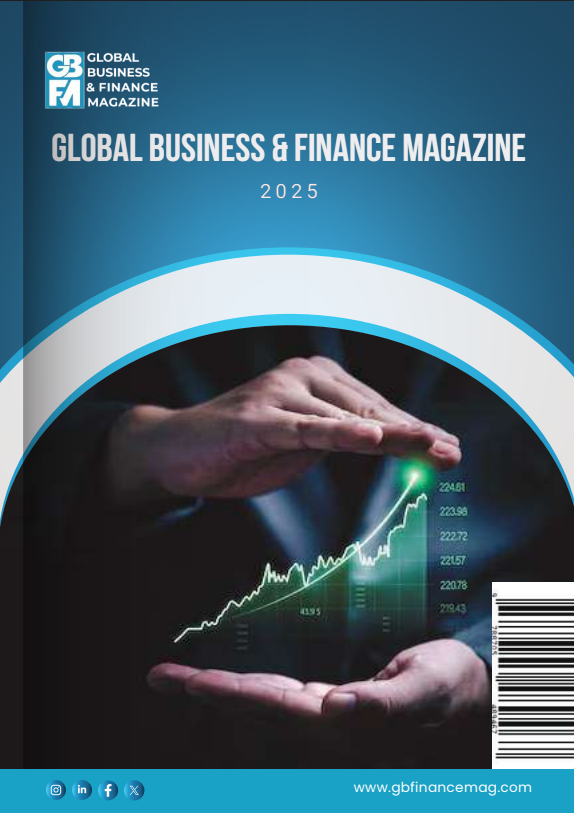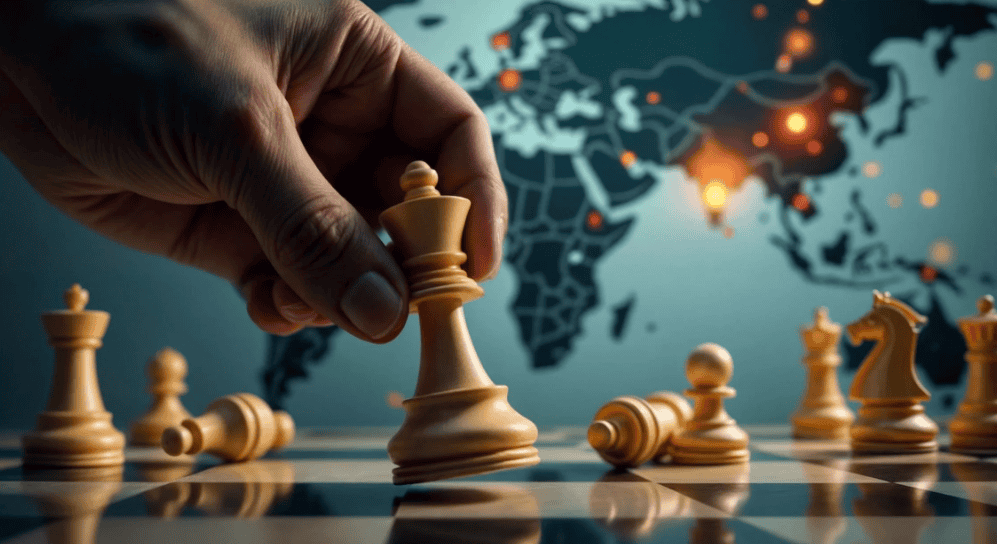There is a growing concern that tensions between China and the US may lead to an unravelling of globalisation. This column discusses how rivalry between great powers can be detrimental to global trade and welfare and introduces the theory of hegemonic globalisation. Analysis of bilateral and multilateral treaties since 1800 shows that a dominant global power (a hegemon) promotes international policy alignment and global trade integration. Transitioning from a unipolar to a multipolar world can lead to fragmentation, which is especially costly for the incumbent hegemon and its allies.
The world economy appears to be entering a new phase of fragmentation, driven by rising geopolitical tensions and the resurgence of great power rivalry. A growing body of research on geoeconomics (Aiyar et al. 2023, Mohr and Trebesch 2025) examines the strategic role of governments – particularly their use of economic power – in shaping international economic relationships (Camboni and Porcellacchia 2024, Clayton et al. 2024a,b, Gopinath et al. 2025, Kleinman et al. 2024, Liu and Yang 2025, Grover and Vézina 2025).
In recent work (Broner et al. 2025a, 2025b), we take a step back and ask a fundamental, underlying question: what is the relationship between global power structures and globalisation? As shown in Figure 1, history offers suggestive evidence that shifts in geopolitical dominance are closely intertwined with the ebb and flow of globalisation. The world economy saw two major waves of trade and financial integration: one in the late 19th century and another in the late 20th and early 21st centuries. Both periods were marked by the presence of a dominant hegemon: Britain during the Pax Britannica and the US during the Pax Americana. In contrast, the global economy fractured during the interwar years of the 1920s and 1930s, a time characterised by multipolar instability and the absence of a clear global leader.
Figure 1 Globalisation thrives in periods of hegemonic dominance


Notes: Panel (a) uses data from TradeHist, showing the ratio of aggregate global exports to world GDP (Fouquin and Hugot 2016). Panel (b) builds on the capital mobility index from (Obstfeld et al. 2005).
We are not the first to notice the link between hegemonic power and globalisation. Kindleberger (1973), in particular, proposed the notion of ‘hegemonic stability’, according to which a stable, open global economy requires a dominant power to sustain it. Yet the arguments have remained somewhat vague. How exactly does hegemonic power shape globalisation? Is integration more or less likely in a multipolar world? Who benefits or loses as the world shifts from a unipolar to a multipolar system?
To address these questions, we propose a novel theory of alignment-based ‘hegemonic globalisation’ and provide empirical evidence based on a new 200-year dataset of international treaties.
A theory of hegemonic globalisation
Our theory rests on two key premises. First, countries differ in their policy preferences, ranging from forms of government to regulatory standards, licensing regimes, and currency systems. Second, the gains from trade between countries increase with the degree of policy alignment. When countries adopt similar policies, transaction costs fall and ‘border effects’ are reduced.
We focus on the role of hegemons – defined by economic size and attractiveness as trade partners – in shaping this alignment. Following political science perspectives (e.g. Gunitsky 2017), we treat hegemony as relative and allow for the coexistence of multiple hegemons.
From these assumptions, the theory yields several insights. In a unipolar world, countries balance their policy preferences against the economic gains from aligning with the hegemon. A sufficiently large hegemon magnifies these gains, leading to broader policy convergence and deeper trade integration – what we call hegemonic globalisation.
This process raises global trade and welfare on average, but can hurt countries with preferences that are different from those of the hegemon. Still, these countries may align if the benefits from joining the integrated system outweigh the costs of remaining outside.
Motivated by recent trends (see Figure 2), the theory also addresses the transition from a unipolar to a multipolar world. The effects of a rising hegemon on globalisation depend on two factors: does the rising power prefer globalisation or fragmentation? And can it influence outcomes? The answers depend on the relative size and policy divergence between the powers.
Figure 2 The rise of China as a US rival: Trends in global power since 1800


Note: Data from Moyer et al. (2024) Global Power Index Database. The Global Power Index combines various economic, military, technological, and diplomatic indicators to obtain a measure of the share of global power that is controlled by each country. HP-filtered trends in country-level power indices over time.
A small rising hegemon has little influence. As it grows, it may align with the incumbent, – reinforcing integration – or promote its own preferences, contributing to fragmentation. If the rising hegemon differs strongly in its preferences from the established hegemon, then a shift to multipolarity will result in fragmentation and the creation of opposing ‘blocs’. In terms of welfare, this shift to a multipolar world will be costliest for the hegemon and the countries close to the hegemon, while the rising hegemon and its allies may benefit, at least in relative terms.
Finally, the theory also incorporates coercion by the incumbent hegemon. Coercion is modelled as the threat to cut off trade with non-aligned countries, leading to the formation of blocs. The hegemon then weighs the trade gains from a committed bloc against the losses from excluding others. Coercion is most effective when the hegemon is large enough to attract significant alignment but not so dominant that alignment occurs voluntarily. In a multipolar world, coercion may temporarily deter a rising power, but if preference divergence is large, the challenger eventually breaks away regardless of threats.
From theory to data: The global treaty database, 1800–2020
To test the theory, we focus on two core empirical implications: (1) hegemons foster alignment, and (2) alignment increases trade – not just bilaterally, but also among countries aligned with the same hegemon.
We measure alignment using international treaties, collecting data on nearly all treaties signed between 1800 and 2020, based on sources like the United Nations Treaty Collection. The resulting global treaty database includes over 71,000 bilateral and 6,000 multilateral treaties across economic and non-economic domains, creating the first comprehensive, global, long-run record of international agreements.
Treaties serve as a natural proxy for alignment: they reflect formal commitments and shared policy orientations. Compared to alternatives like military alliances or UN voting patterns, treaties are more comprehensive and vary more across time and policy domains (Broner et al. 2025b).
The data reveal several key patterns. First, treaty-making has generally increased over time, with a few sharp declines, with the most recent decline occurring since the early 2000s, comparable in size to those during the World Wars (Figure 3). Second, most treaties concern economic issues such as trade, investment, transportation, and taxation. Since World War II, such treaties comprise 65% of the total.
Figure 3 The global treaty database: Number of newly signed treaties per year worldwide


We find clear support for the theory’s empirical predictions. First, hegemons are significantly more likely to sign treaties and influence the alignment of others. 1 Moreover, treaty-making tends to shift toward rising powers: in the late 19th century, South America redirected treaties from the UK to the US (Figure 4); by the end of the Cold War, developing countries shifted away from the USSR toward the US (Figure 5); and more recently, many countries have increased treaty-making with China at the expense of the US (Figure 6).
Figure 4 Shifts in global treaty alignment: UK vs US pre-WWI


Notes: We capture alignment by comparing the number of treaties a country signs with the US and UK, respectively. Countries are coloured in brown if they signed more treaties with the UK and blue if they signed more with the US. “NA” in case no treaties were signed in that decade (mostly colonies).
Figure 5 Shifts in global treaty alignment: US vs USSR throughout the Cold War


Notes: We capture alignment by comparing the number of treaties a country signs with the US and the Soviet Union, respectively. Countries are coloured in orange if they signed more treaties with the Soviet Union and blue if they signed more with the US. “NA” in case no treaties were signed in that decade.
Figure 6 Shifts in global treaty alignment: US vs China today


Notes: We capture alignment by comparing the number of treaties a country signs with the US and China, respectively. Countries are coloured in red if they signed more treaties with China and blue if they signed more with the US. “NA” in case no treaties were signed in that decade.
Second, we use gravity models to show that countries signing more treaties with each other trade more, across both economic and non-economic agreements and in both historical and modern contexts. Treaties are not only correlated with trade but also serve as predictors of future trade flows. For instance, reintegration episodes like Eastern Europe post-1990 were preceded by a surge in treaty-making.
We also find evidence of indirect trade effects. Countries that sign more treaties with the same hegemon trade more with each other than their bilateral treaty links would suggest – consistent with bloc formation and shared alignment effects predicted by the theory.
Looking ahead
Our findings underscore the importance of global power structures in shaping patterns of economic integration. Hegemons support political alignment and globalisation, while geopolitical rivalry can lead to fragmentation. Yet many questions remain. In our model, the number and size of hegemons are treated as fixed. In reality, these evolve endogenously with trade and growth. This opens the door to strategic behaviour: existing hegemons may limit trade with rising powers to constrain their influence.
Understanding this dynamic interaction between integration, economic growth, and power offers a rich avenue for future research. As the world shifts from a unipolar to a more fragmented or multipolar order, the stakes for global welfare – and the institutions that support it – are likely to grow.
Source : VOXeu





